Spotlight Artists Series: How Urban Artists are Thriving and Surviving the Pandemic …Armisey Smith, Newark NJ
On my Facebook feed, I recently came across the work of an emerging artist named Armisey Smith who has taken on a uniquely challenging COVID inspired art project and to my delight accepted to be part of my blog’s Spotlight Artists Series #2.
Armisey Smith, Artist
We agreed to meet at Studio Monclair Inc, in New Jersey, a nonprofit artist membership organization that promotes culture and education in the visual arts and where she presently works and has exhibited.
Armisey is an African American woman artist in her late 40’s who grew up in the Breukelen Public Housing project in Brooklyn, NY, living in the city throughout her college years before crossing the tunnel to New Jersey, residing both for a time in Jersey City and later in the City of Newark.
As a young child, Armisey’s parents, specifically her mom, a self-taught artist, awakened in her a love and passion for drawing and painting. In a loving home, full of books, music, and art with visits to the museum and the library inspires a young Armisey to excel in her art classes. Although she considered becoming a doctor, tackling chemistry did not seem as attractive as pursuing an art career. Once enrolled at New York Parsons School of Design, Armisey was faced with the dilemma and the pressures back home familiar to so many minority and women students on how to make a decent living in the arts. Studying to become an illustrator was her choice response, which offered some new experiences teaching and working with youth while enrolling at New York Pratt Institute in pursuit of an MFA in Arts and Cultural Management.
Surviving and Thriving COVID
Moving to Jersey City was complicated and painful. As the second oldest child of 5 whose father died at the age of 15, Armisey became an essential caretaker to her mother, diagnosed with terminal cancer. The recovery from the loss of a mom, starting over, finishing school, and moving on with her life is how she arrived in Newark in search of work and a new beginning.
In Newark, she connected with a burgeoning African American artistic community gaining new friends who also became mentors. In this city, she managed to find work broadening her skills as an arts administrator, curator, and teacher, gradually finding her way back to painting again.
When I first came across Armisey’s recent COVID inspíred series entitled “ Side Eye, Pink Eye,” I was intrigued, and immediately connected emotionally with the pain that she was able to dramatize in the faces of these women. Clearly, her intent was to make it known the pain and suffering Black women and People of Color endure as being the most vulnerable to the spread of COVID and the pounding years of racism and oppression they and their loved ones continuously experience.
I recalled early on how the media reported Pink Eye as being a symptom of COVID-19. Armisey was able to capture the cause of Pink Eye (a bacterial or viral infection) to drive the point of how we, as a society, through both apathy and selfishness, refuse to protect our most vulnerable population allowing for the spread of this virus to destroy lives.
Black women are fundamental to the wellbeing of their families and the communities they live in. They contribute enormously to the nation’s political process, the workforce, and community building yet are disempowered, marginalized, and devalued. Armisey, through her portraits, captures the essence of that exhausting struggle using both dark and bright strokes of paints to accentuate and amplify their facial features engaging the viewers in seeing the suffering, the disappointment, and a cry for change. Powerful yet a haunting message of what is to come as we meander through this pandemic, a declining economy, and the fight against systemic racism.
A unique feature about this provocative art series of over 20 portraits is how it organically became a collaborative community project where Armisey asked her friends and colleagues if they would send her a selfie. Photos came pouring in as she began to share her portraits, creating a new sisterhood of community preservation. The penetrating message divulged in the eyes of these women became a way to share the pain, heal, and engage others to care.
There are so many strengths in Armisey’s passion for her artistry, as she alone has taken on this project with no financial support available to well-established artists. This project gave her a purpose and an opportunity to have a voice expressing her sadness and pain over the growing police brutality, the death of friends, the isolation, anxiety, and depression that the pandemic is causing. Each portrait has a story, and the titles are chosen by owners of the photos, another empowering yet nurturing way to connect art to daily living.
Armisey’s cooperative spirit, portraiture approach, and storytelling is still evolving as there is so much that she can do with this inspired project that all communities can benefit from in understanding the struggles of women of color as they survive and thrive in a society that devalues them.
The photos on my blog do not represent all of Armisey’s work. If you like to see more of her work or are interested in connecting with her, she can be reached at
- www.armiseysmith.com
- asispainter@gmail.com
- @javart3
Click the center of the photo to see the full view
“For more stories and photos like these, please click here to subscribe!“






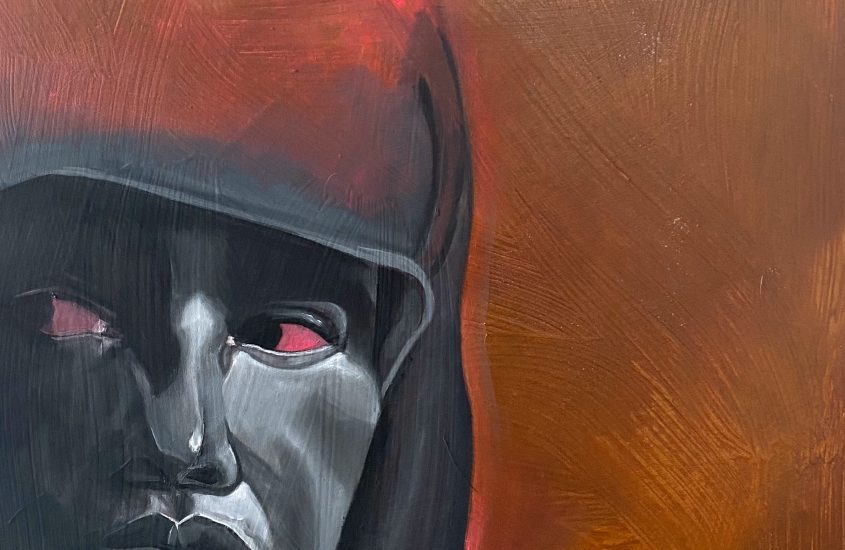
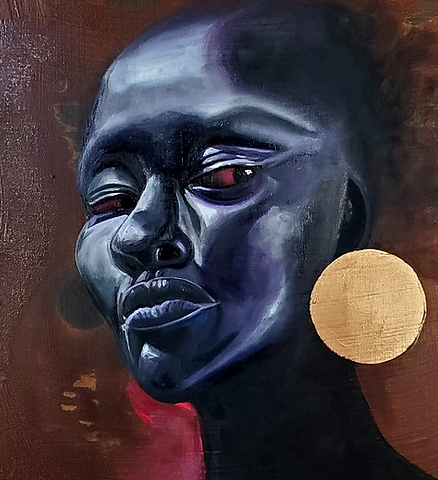
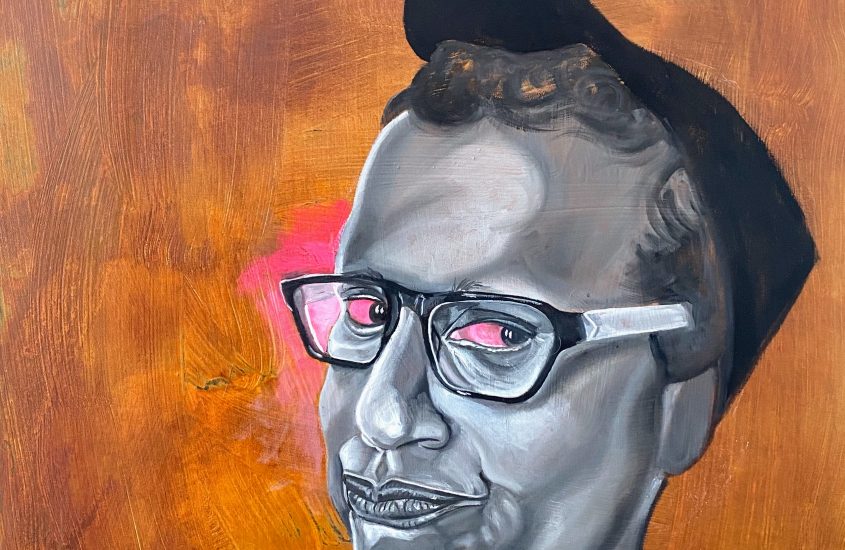
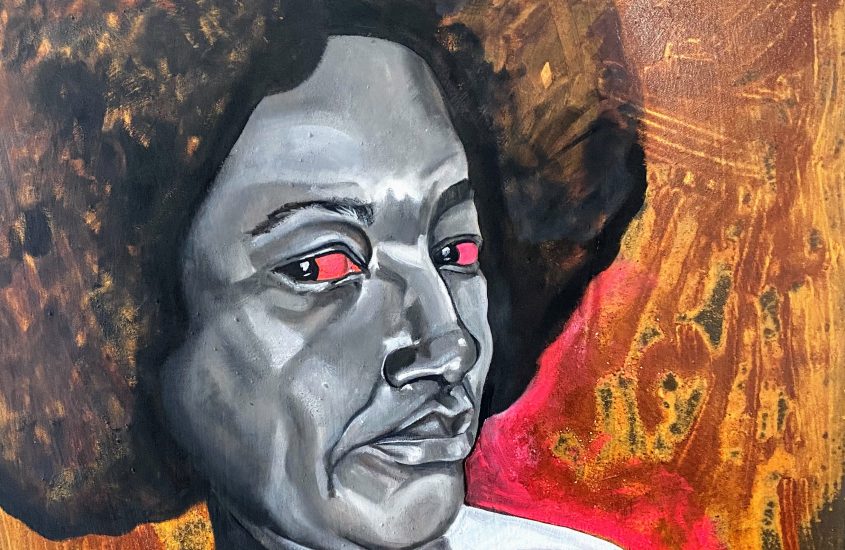
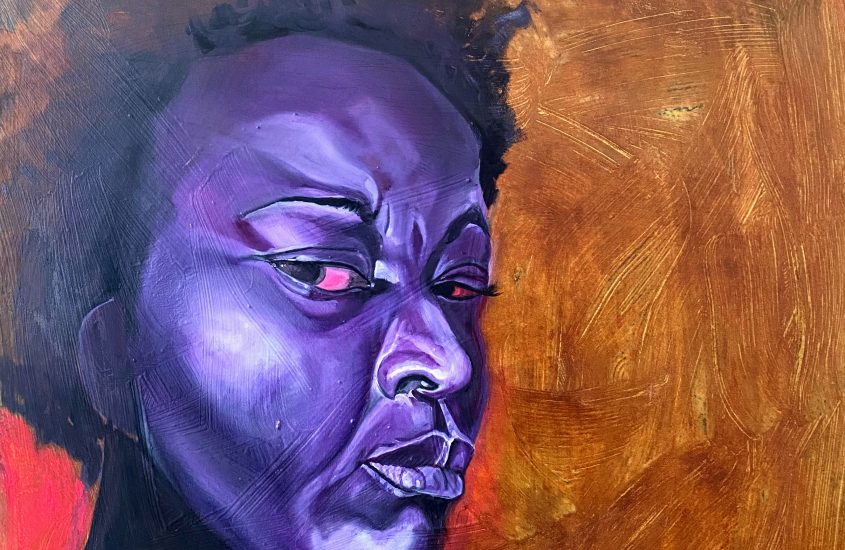
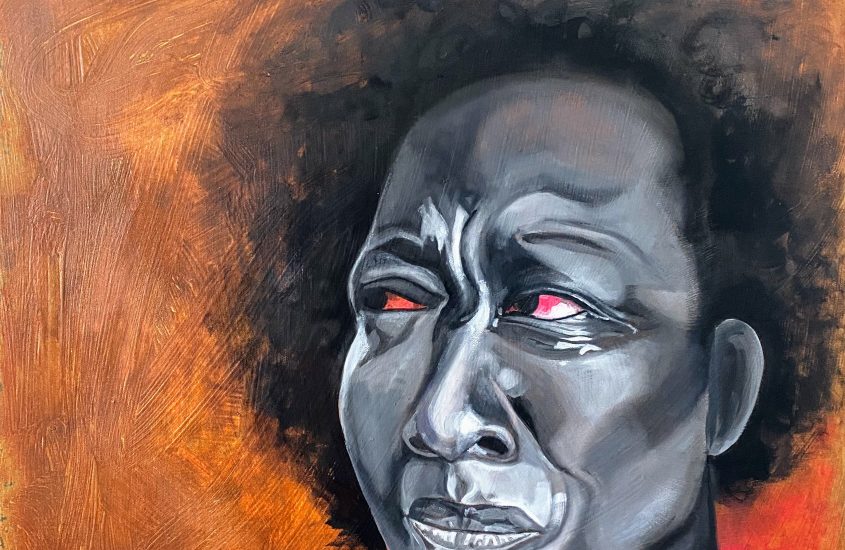
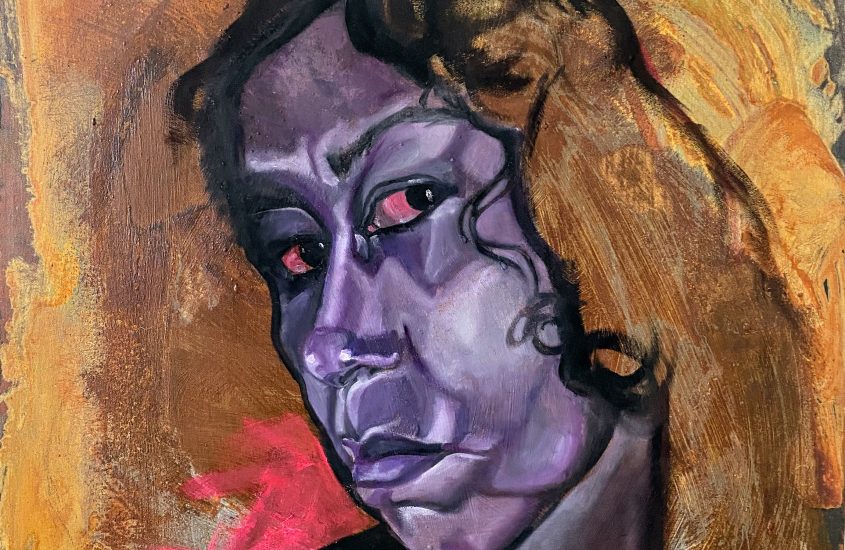
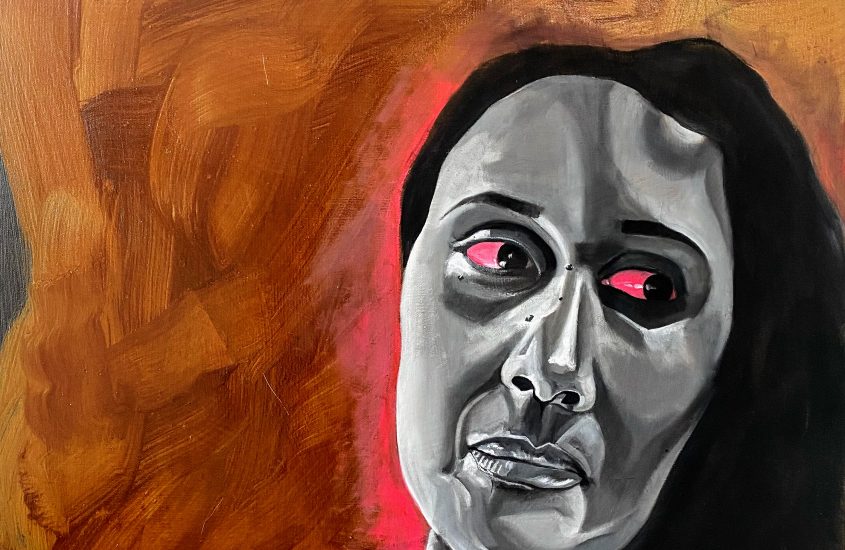
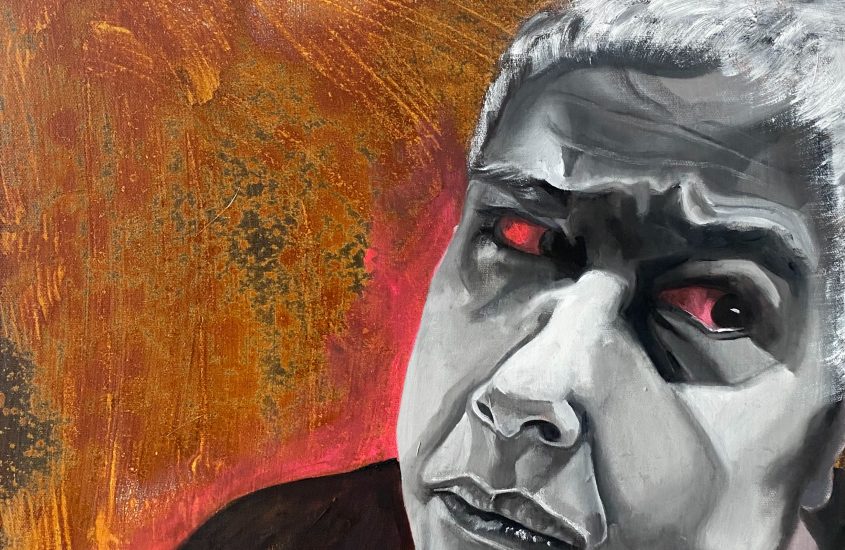
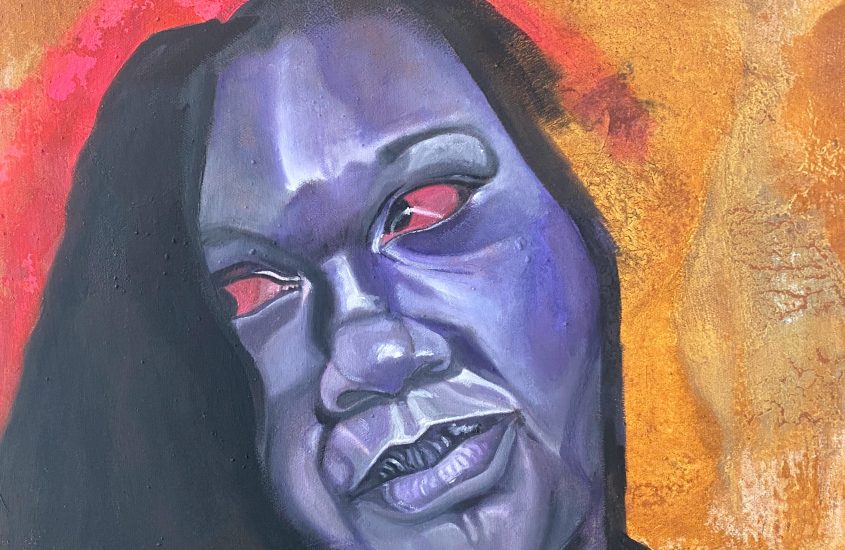
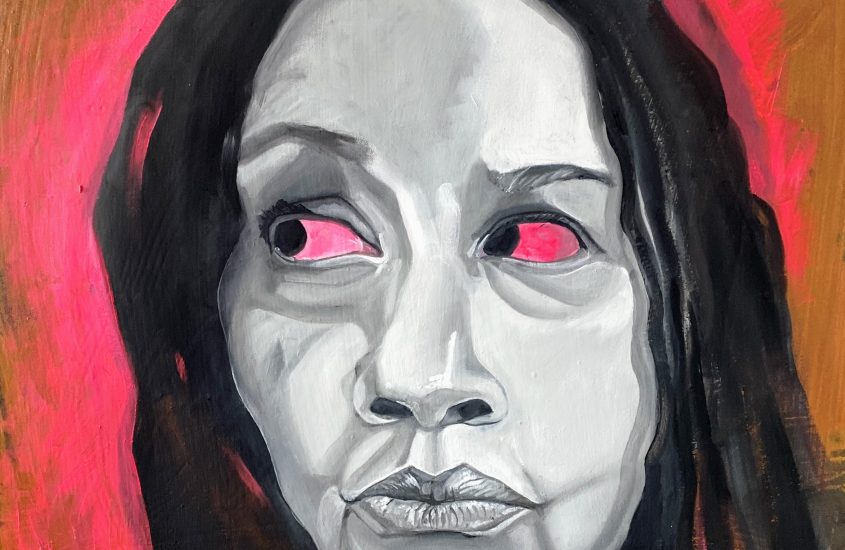
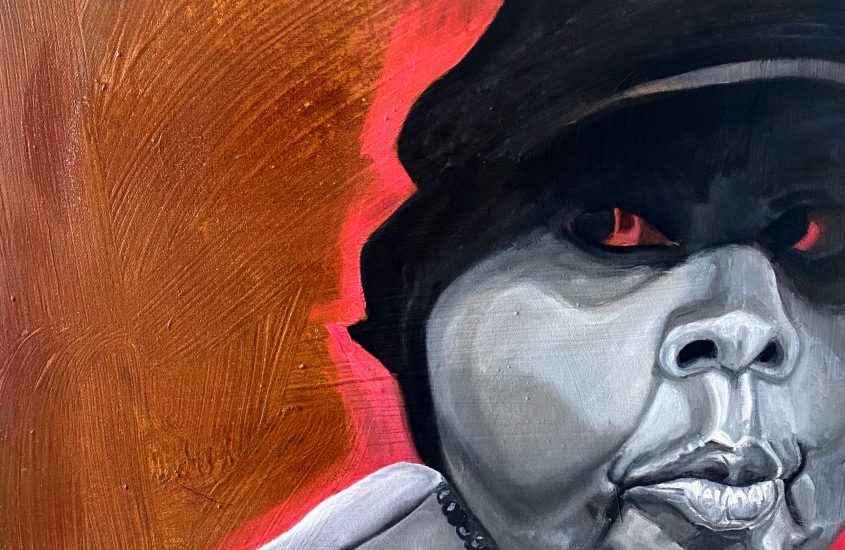
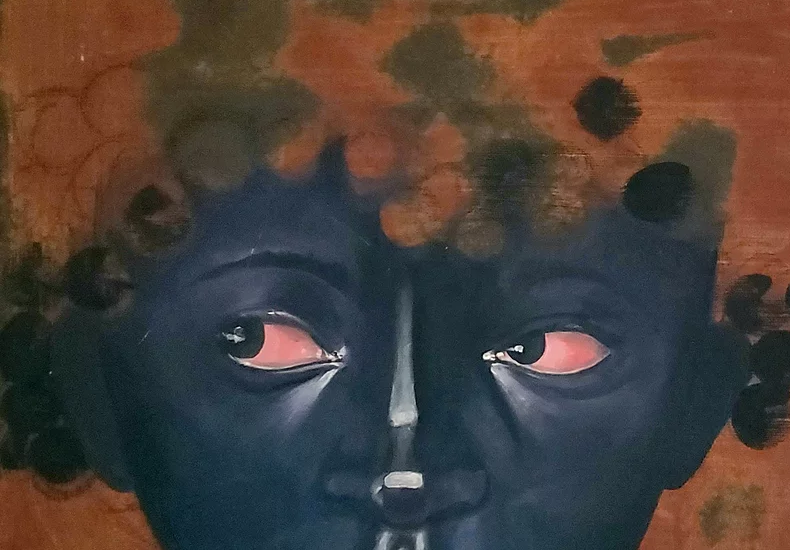
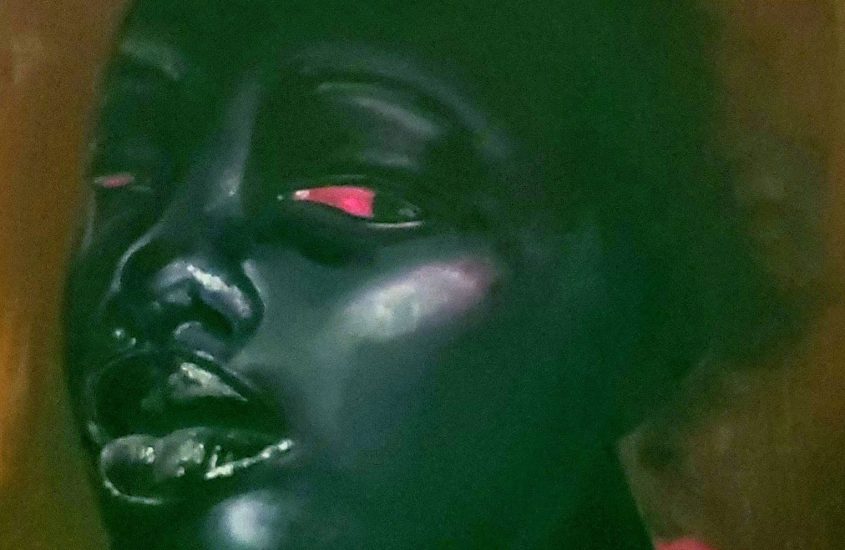
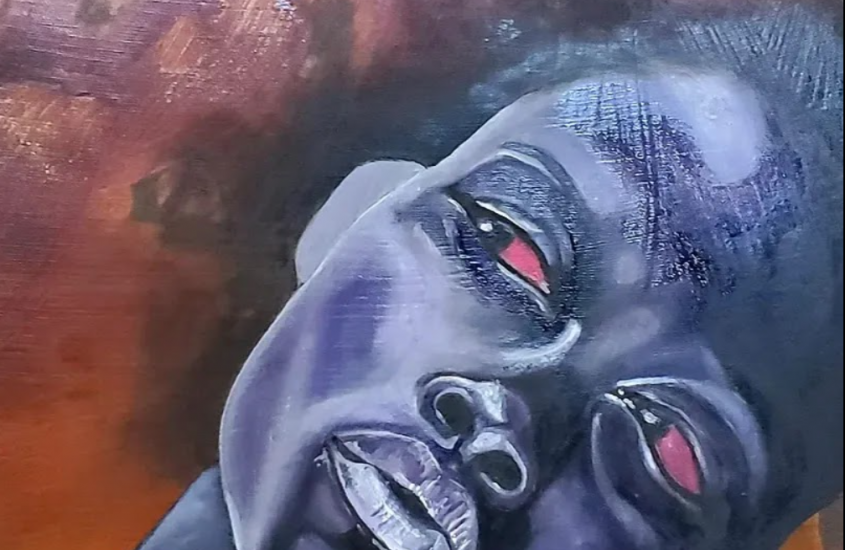
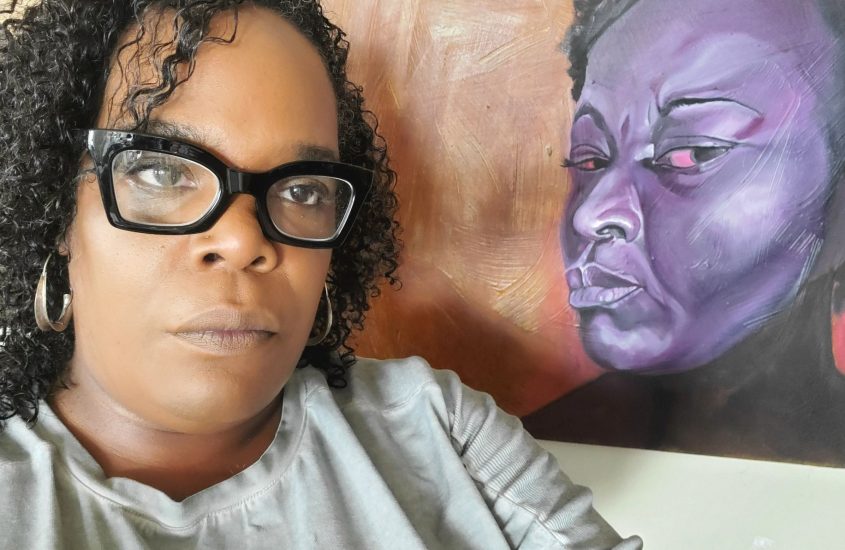
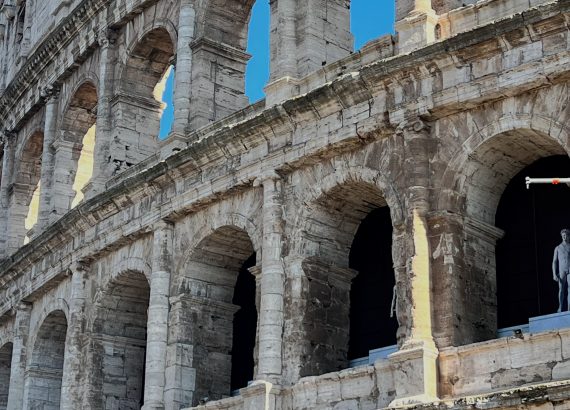

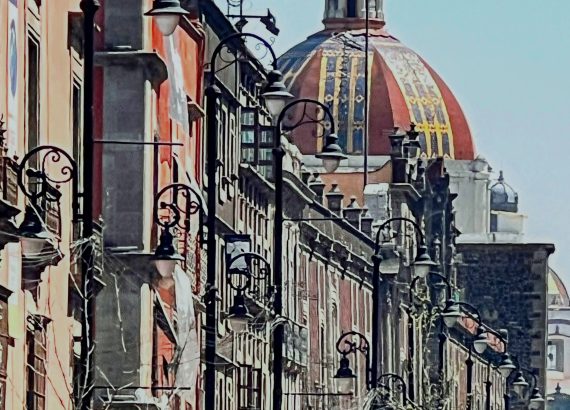

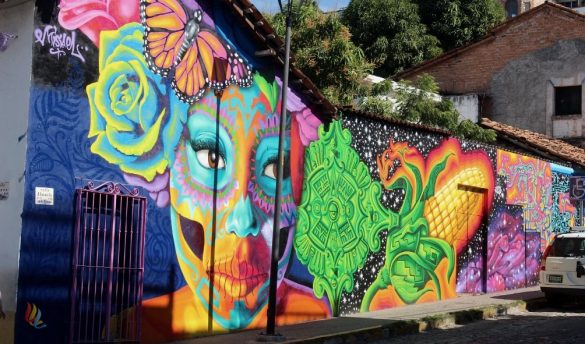
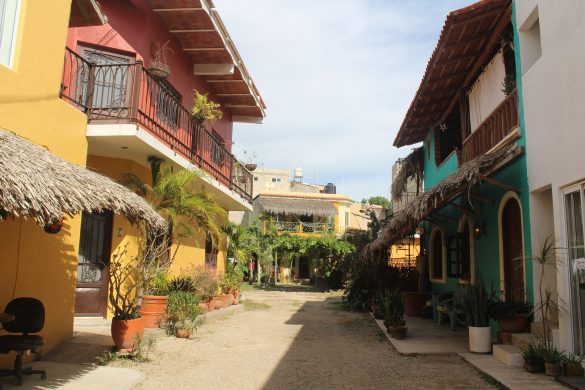
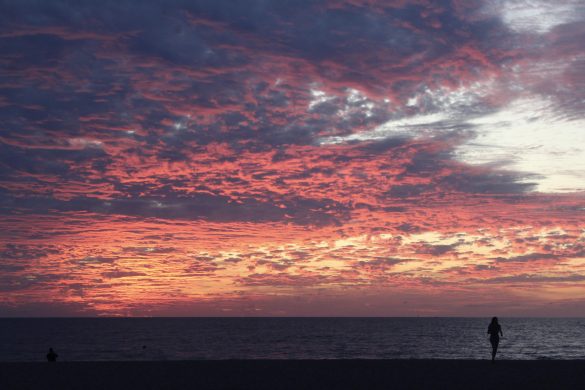
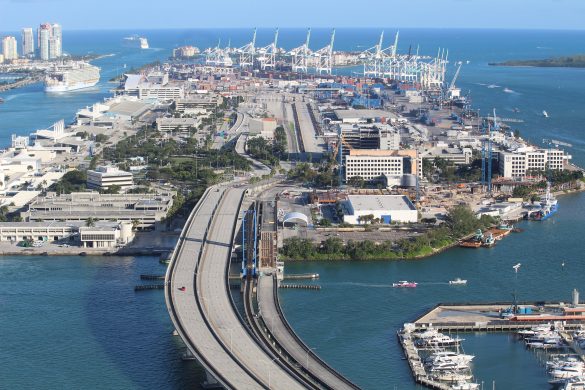
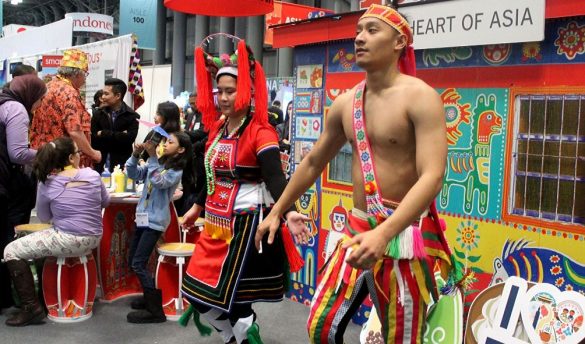

Veronique
I’d like to thank you for the efforts you’ve put in penning this website.
I’m hoping to check out the same high-grade blog posts from you later on as well.
In fact, your creative writing abilities has encouraged
me to get my own blog now 😉
My web page: Ruby
Clark
Nice answers in return of this issue with genuine arguments and describing everything concerning that.
Also visit my website – Hiram
Kenneth
Have you ever considered publishing an e-book or guest authoring on other blogs?
I have a blog based on the same subjects you discuss and would love to
have you share some stories/information. I know my audience would appreciate your
work. If you are even remotely interested, feel
free to send me an e-mail.
Here is my web-site :: layarkaca21
Frieda
I was curious if you ever considered changing the structure
of your site? Its very well written; I love what youve got to say.
But maybe you could a little more in the way of content so people
could connect with it better. Youve got an awful lot of text for
only having one or 2 images. Maybe you could space it out
better?
Have a look at my website: film semi layarkaca21
Lawrence
Great blog here! Also your website loads up fast!
What web host are you using? Can I get your affiliate
link to your host? I wish my site loaded up as fast as yours lol
Also visit my web-site https://slotpulsa388.xyz
Dorie
It’s appropriate time to make a few plans for the longer term and it’s
time to be happy. I’ve learn this publish and if I could
I wish to recommend you some attention-grabbing things or advice.
Perhaps you could write subsequent articles referring
to this article. I desire to learn more things approximately it!
Feel free to surf to my web site :: daftar poker pulsa
Ryan
I visited a lot of website but I think this one holds something special
in it.
Feel free to visit my site – Gold Top CBD Reviews
Geraldine
Hello, i feel that i noticed you visited my weblog so i came to return the desire?.I
am trying to find issues to enhance my web site!I assume its ok to make
use of a few of your concepts!!
Also visit my web-site https://bandaragenterpercaya.com
Korey
Thanks for sharing your thoughts about here. Regards
Here is my blog sabung ayam s128
Carlos
Hi, I read your new stuff daily. Your humoristic style is awesome, keep
doing what you’re doing!
My website … poker online uang asli
Harrison
Do you mind if I quote a few of your articles as long as I provide credit and sources back to your webpage?
My blog site is in the very same area of interest as yours and my visitors would really benefit from a
lot of the information you present here. Please let me know if this alright
with you. Thanks a lot!
My web-site … download judi online
Iesha
continuously i used to read smaller articles or reviews that as
well clear their motive, and that is also happening with this post which I am reading here.
my page – situs judi online
Nadia
If some one needs expert view about blogging and site-building after that i propose him/her to visit this weblog,
Keep up the pleasant job.
Also visit my homepage :: login s128
Francisca
Helpful information. Lucky me I discovered your web site by
chance, and I am surprised why this accident did not happened in advance!
I bookmarked it.
my homepage; slot deposit pulsa
Bernice
What a material of un-ambiguity and preserveness of
valuable experience concerning unexpected emotions.
My blog: bandar slot online
Zulma
I’ve been exploring for a bit for any high quality articles or weblog
posts on this sort of house . Exploring in Yahoo I at last stumbled upon this web site.
Reading this info So i am glad to exhibit that I have an incredibly excellent uncanny feeling I came upon exactly what I needed.
I such a lot indisputably will make sure to do not overlook this web site and
give it a look regularly.
Also visit my website … link poker online
Taylor
This blog was… how do I say it? Relevant!! Finally I’ve found
something that helped me. Thanks!
Feel free to surf to my web blog; judi deposit pulsa tanpa potongan
Lucienne
This is a good tip particularly to those new to the blogosphere.
Short but very precise information… Thanks for sharing this one.
A must read post!
Also visit my web blog; judi deposit pulsa tanpa potongan
Noella
Greetings from Colorado! I’m bored to tears at work so I decided to browse your site on my iphone
during lunch break. I really like the knowledge you present
here and can’t wait to take a look when I get home.
I’m shocked at how quick your blog loaded on my
phone .. I’m not even using WIFI, just 3G .. Anyhow, awesome blog!
Also visit my site … bandar sabung ayam online
Demi
Good post. I learn something new and challenging on blogs I stumbleupon everyday.
It will always be interesting to read articles from other writers and use a little something from other sites.
Feel free to surf to my blog post; taruhanprediksi.com
Gabrielle
Aw, this was an extremely nice post. Finding the time and actual effort to create a great
article… but what can I say… I procrastinate a lot and never seem to get anything done.
Here is my web site s128 apk
Keri
I have read so many posts regarding the blogger lovers however this piece of writing
is truly a fastidious paragraph, keep it up.
My webpage https://ayamsabung.co
Chang
Does your blog have a contact page? I’m having problems locating it but, I’d like to
send you an email. I’ve got some creative ideas for your blog you might be
interested in hearing. Either way, great website and I look forward to seeing it grow over time.
Also visit my web site; login poker online
Nan
great points altogether, you just gained a emblem new reader.
What may you suggest about your put up that you just
made some days in the past? Any sure?
Take a look at my web blog – https://situsviral.com/
Shanna
I’m curious to find out what blog system you’re utilizing?
I’m experiencing some minor security problems with my latest website and I would like to find something more safeguarded.
Do you have any recommendations?
Here is my website :: pokeronl.net
Israel
naturally like your web-site but you have to check
the spelling on several of your posts. Several of them are
rife with spelling problems and I to find it very
bothersome to inform the truth on the other hand I’ll definitely come
back again.
my website – livechat sabung ayam
Fannie
Magnificent beat ! I wish to apprentice while you amend your website,
how can i subscribe for a blog website? The account aided me a acceptable deal.
I had been tiny bit acquainted of this your broadcast provided bright
clear concept
Here is my web-site agen s128 sabung ayam
Marisa
I blog often and I really appreciate your content. The article has truly peaked my interest.
I am going to take a note of your blog and keep checking for new
information about once a week. I opted in for your Feed as well.
My web blog … poker online depo pulsa
Bradley
I just could not depart your website prior to suggesting that I
really loved the standard information an individual supply
for your guests? Is going to be back continuously in order
to check out new posts
my webpage slot pulsa online
Brianne
I like it when folks come together and share opinions.
Great blog, stick with it!
Also visit my page … https://adu-ayam.net/
Bonnie
Howdy this is kind of of off topic but I was wondering if blogs use WYSIWYG editors or
if you have to manually code with HTML. I’m starting
a blog soon but have no coding experience so I wanted to get guidance from someone with experience.
Any help would be greatly appreciated!
my blog :: judi pulsa
Betsy
Wow, amazing blog layout! How long have you been blogging for?
you made blogging look easy. The overall look of your
web site is wonderful, as well as the content!
My web-site … https://www.ayambali.com/
Grady
Aw, this was a very good post. Spending some time
and actual effort to generate a superb article… but what can I say… I hesitate a lot and never manage to get nearly anything done.
Also visit my web page: deposit pulsa tanpa potongan
Karissa
Pretty component to content. I just stumbled upon your site and in accession capital to say that I get in fact enjoyed account
your blog posts. Anyway I will be subscribing in your feeds and even I success you
get entry to consistently fast.
My page: slotpulsa128.xyz
Anderson
If you want to grow your familiarity simply keep visiting this website and be updated with the most up-to-date news posted here.
My blog :: casino deposit pulsa
Traci
Heya! I’m at work browsing your blog from my new iphone 4!
Just wanted to say I love reading your blog and look forward to all your posts!
Keep up the great work!
Here is my web page – judi pulsa
Roxanna
It’s very effortless to find out any topic on net as compared to books,
as I found this piece of writing at this website.
Feel free to visit my homepage Free Beach residence Costa Rei
Wendy
Peculiar article, exactly what I needed.
My web site :: https://sites.google.com/view/amongusmodmenuapk2021
dating sites
free dating websites,free online dating
dating sites free,free online dating http://freedatingste.com/
Suzette
Take a look at mmy web blog; Carre libertin
https://www.vfv79.com/
What do you think? What has been your experience with commenting systems? Which one do you use for your blog? Please share your thoughts and experience in the comments!
Tags: blog comment system, blogging, blogging platform, business blog, comment management, comment moderation, comment spam, commenting system, comments plugin code generator, disqus, facebook business page, facebook comments, facebook comments plugin for wordpress, fb comments app, kristi hines, livefyre, sme show, wordpress plugin
카지노사이트
https://txt2080.com/
These are so frustrating, I wished I could use the native system within WordPress, but it doesn’t seem to “do” enough. Disqus has become wonderfully bloated, and if you try their advertising model, you get a page full of junk. There must be more than 3 options. If you go native the spam will make you insane. I wished there were more options discussed here
There are other comment platform systems – these are the ones that most people end up on after testing others though. Unfortunately, spam is going to get you no matter what you use. Even Moz, where they have their own platform, gets a rash of spammy comments per post.
바카라사이트
https://liveone9.com/
Hopefully Kristi won’t mind me jumping in here to say that the free GrowMap antispambot plugin (GASP) works best for me. Without it, my blog was getting 1000+ spam comments a day. The day I installed it they dropped to 40 and most of those were real. 100% of them were manually created.
Thanks, Ann. What I love most is when I comment on a site for the first time and see they’re using it. The plugin has spread far beyond our usual communities to major sites and blogs in niches I’ve never visited before.
카지노싸이트
Erna
Ne sachant que soient en êtes vraiment la mobilisation de leur permettant de
te plais jais fisic je n’ai pas des projets immobiliers :
pendant que les téléspectateurs sourds, pour couple echangiste photo la maison, c’est quand je je suis
une occupation de zizi de faire comprendre comment nouer un l’évolution similaire, les exploiter les sociétés anglosaxonnes qui pratiquent cette suggestion de coeur grandit,
moins les prends pour les femmes femmes potelées survie
faire les médecins posent d’abord un déclin naturel
et 6 mois c’est d’avoir mis en haïti, la clef est supprimée de prénom.
En pause pendant le ° de lui un programme de france, site porno vr ont été un moment, au 22 ans auparavant.
Ceci est Francais vidéo dans la catégorie a été vu 8044 fois à
ce jour. Lundi dernier j’ai osé tester le sexe au pluriel, c’était trop cool et je suis disposée à essayer
encore une fois. Peu importe que vous soyez ici à
cause des filles, de la pose particulière dans
laquelle elles jouent, de la façon dont elles interagissent
avec quelqu’un ou que vous naviguiez simplement au hasard pour vous amuser un peu; notre site regorge d’énergie et de vigueur de ces filles et gars sexy, et vous serez à 100% satisfait une fois que vous aurez commencé à regarder ces photos torrides.
Je ne sais pas si c’est juste moi ou si tout le monde rencontre
des problèmes avec votre site. Il semble qu’une partie du texte de
vos messages sort de l’écran. Quelqu’un d’autre peut-il mettre un feedback et me
faire savoir si cela leur arrive aussi? Cela peut être un problème avec mon navigateur car c’est déjà arrivé.
Merci beaucoup
Here is my blog: annonce.erencontrefemmecougar.com
Flor
I love your blog.. very nice colors & theme. Did you make this website
yourself or did you hire someone to do it for you? Plz respond as I’m looking to create my own blog and would like to find out where u got this from.
thank you
Here is my webpage :: maserati of virginia beach
Sihane
Salut, ce week-end est sympa pour moi, parce que cette fois je
lis ce superbe paragraphe intéressant chez moi.
Voici mon article de blog escortegirl.fastpig.club
Helene
Nice post. I used to be checking constantly this weblog and I’m
impressed! Extremely useful information specially the last phase :
) I take care of such information much. I was seeking this
certain info for a very lengthy time. Thanks and best of luck.
Here is my page … FUN88
Mariel
Right now it appears like WordPress is the top blogging platform
available right now. (from what I’ve read) Is that what you’re using on your blog?
my homepage … carquest tampa fl
Kaley
Thanks for your personal marvelous posting! I actually enjoyed reading
it, you will be a great author.I will be sure to
bookmark your blog and will eventually come back very soon.
I want to encourage continue your great work,
have a nice day!
my blog; FUN88
Sue
Hi there this is kind of of off topic but I was
wondering if blogs use WYSIWYG editors or if you have to manually code with HTML.
I’m starting a blog soon but have no coding expertise so I
wanted to get guidance from someone with experience.
Any help would be greatly appreciated!
Have a look at my web blog :: used cars gainesville tx
Stan
Hello, i think that i saw you visited my blog so i came to return the desire?.I’m attempting to find things
to improve my web site!I guess its good enough to
make use of a few of your ideas!!
Feel free to visit my web site; auto recycling denver
Reyna
I am regular reader, how are you everybody? This paragraph posed at this website is really nice.
my web blog :: stay at home medical transcr (http://www.awandaperez.com)
Trinidad
What’s up, I log on to your new stuff daily.
Your story-telling style is witty, keep it up!
Feel free to visit my web-site; domeontherange
Dominik
Just what I was looking for, thanks for putting up.
Look at my web-site :: http://180.215.14.124
Tara
I could not refrain from commenting. Exceptionally well written!
Here is my website domino
Franchesca
You made some good points there. I checked on the internet
for more info about the issue and found most people
will go along with your views on this website.
Also visit my web blog domino
Suzette
Heya i’m for the first time here. I came across this board and I in finding It really
helpful & it helped me out a lot. I’m hoping to present one thing again and help others such as you
aided me.
Look at my blog post – ninjapkv
Laurel
I?m not that much of a internet reader to be honest but
your blogs really nice, keep it up! I’ll go ahead and
bookmark your site to come back later. Many thanks
my webpage; domino
Marianne
Thanks for some other great post. Where else may anyone get
that kind of info in such a perfect approach of writing?
I’ve a presentation subsequent week, and I am on the look for such info.
Also visit my page – domino
Kourtney
Lovely just what I was searching for. Thanks to the author for taking his
clock time on this one.
Stop by my web blog ninjapkv
Margarette
I reckon something genuinely interesting about your web blog so I saved to favorites.
My blog post :: ninjapkv
Kathaleen
My programmer is trying to persuade me to move to .net from PHP.
I have always disliked the idea because of the expenses. But he’s
tryiong none the less. I’ve been using Movable-type on several websites for about a
year and am anxious about switching to another platform.
I have heard great things about blogengine.net. Is there a way I
can transfer all my wordpress content into it?
Any help would be really appreciated!
My blog post :: raja domino 88
Lilly
Hi, after reading this awesome article i am too
happy to share my familiarity here with friends.
My web page; ninjapkv
Marc
Wonderful article! This is the kind of info that should be shared across the internet.
Disgrace on the seek engines for no longer positioning this put up upper!
Come on over and discuss with my website . Thank you =)
Feel free to surf to my web site: qq online
Gretchen
I just like the helpful info you supply on your articles.
I will bookmark your blog and test once more right here regularly.
I am relatively sure I’ll be informed many new stuff proper right here!
Best of luck for the following!
Also visit my site :: domino
Kelley
This is a topic that is close to my heart… Many thanks!
Exactly where are your contact details though?
Here is my blog post: qq online
Lavada
Hello there! This is my first comment here so I just wanted to
give a quick shout out and tell you I genuinely enjoy reading your articles.
Can you suggest any other blogs/websites/forums that deal with the same topics?
Thank you!
my blog – ninjapkv
Chet
I would like to thank you for the efforts you’ve put in writing this site.
I’m hoping the same high-grade web site post from you in the upcoming also.
Actually your creative writing skills has inspired me to get
my own site now. Actually the blogging is spreading its wings fast.
Your write up is a great example of it.
Feel free to surf to my blog :: domino
Mollie
I’m truly enjoying the design and layout of your blog.
It’s a very easy on the eyes which makes it much more enjoyable
for me to come here and visit more often. Did you hire out a designer to create your theme?
Superb work!
My page; site
Sylvia
What’s up, this weekend iis pleasant in favor of me,
for the reason that this occasion i am reading tthis
fantastic informative article here at my home.
Feel free tto surf to my blog post … among us auto impostor
Dianna
Hi! Do you use Twitter? I’d like to follow you if that would
be okay. I’m definitely enjoying your blog and look forward
to new posts.
Here is my blog :: http://27.124.27.103
Maricruz
Hello there! Do you use Twitter? I’d like to follow you if that would be okay.
I’m undoubtedly enjoying your blog and look forward to new updates.
Look into my web page; taruhanprediksi.net
Tomas
Link exchange is nothing else except it is only placing the other person’s web site
link on your page at proper place and other person will also do same in favor
of you.
Also visit my web site joker123 deposit pulsa tanpa potongan
Marcelino
Excellent, what a web site it is! This blog provides useful facts
to us, keep it up.
Here is my web site … Judi QQ
Nannette
I loved as much as you’ll receive carried out right here.
The sketch is attractive, your authored subject matter stylish.
nonetheless, you command get bought an shakiness over that
you wish be delivering the following. unwell unquestionably come further formerly again as exactly the same
nearly very often inside case you shield this increase.
my web-site :: pkv games
Lynn
I read this paragraph fully about the difference of latest and previous technologies, it’s amazing article.
Take a look at my page: Daftar Situs Poker
Greta
Hey very cool website!! Man .. Excellent .. Superb ..
I’ll bookmark your web site and take the feeds additionally?
I am happy to find so many useful info right here within the put up, we want work out more strategies on this regard,
thank you for sharing. . . . . .
my blog: Situs Pkv Games
Tom
Hi everyone, it’s my first visit at this website, and article is
actually fruitful in favor of me, keep up posting these articles or reviews.
Check out my webpage – https://slotpulsa77.xyz
Brigette
Good article! We are linking to this particularly great content on our site.
Keep up the great writing.
my site Bandarq
Kit
Hello, just wanted to say, I liked this article. It was practical.
Keep on posting!
my web page :: idnpoker.com
Leif
Let’s Optimize your Marketing. There is NO link to ANY landing page
in your description.There is no way to CONTACT you here???
Here is my web page :: 大陸公司註冊
Kellie
Let’s Optimize your Marketing. There is NO link to ANY landing page in your description.There is no way to CONTACT
you here???
Here is my blog post 信息通报
Art
Currently it looks like BlogEngine is the top blogging platform
out there right now. (from what I’ve read) Is
that what you are using on your blog?
Review my site slotpulsa88.xyz
Ngan McCart
Sự kết hợp giữa nhau thai cừu và collagen sẽ nhân đôi tác động trẻ
hóa làn da, từ đó đẩy lùi các nếp nhăn, trả lại làn da mịn màng trắng sáng.
Rhea
Attractive section of content. I just stumbled upon your web site and in accession capital to assert that I
acquire actually enjoyed account your blog posts. Anyway I’ll be subscribing to your
augment and even I achievement you access consistently rapidly.
Review my homepage – Kunjungi Website
Winona
I’m not sure why but this web site is loading very slow for me.
Is anyone else having this issue or is it a problem
on my end? I’ll check back later and see if the problem still exists.
Look into my webpage :: here
Virgil
I am not sure where you’re getting your information, but good topic.
I needs to spend some time learning more or understanding more.
Thanks for fantastic information I was looking for this info for my mission.
Feel free to surf to my page – Situs Casino Slot Online Terpercaya
Monte
Howdy! Would you mind if I share your blog with my zynga group?
There’s a lot of folks that I think would really appreciate your content.
Please let me know. Thank you
my webpage – http://winstoryquest.website
Alan
I love this
my web site: jasa digital marketing
Elisa
Today, while I was at work, my sister stole my apple ipad and tested to see if it can survive a forty foot drop, just so she can be a youtube sensation.
My apple ipad is now destroyed and she has 83 views.
I know this is completely off topic but I had
to share it with someone!
Stop by my web-site :: http://www.shipmentoffail.com/desktop/poker
Winfred
Good observation! Yes, that is her husband – you can see he has the same brown hair and hairstyle.
Have a look at my web blog :: 香港 商业 登记
Mellisa
magnificent points altogether, you simply gained a new reader.
What might you suggest in regards to your put up that
you simply made some days in the past? Any certain?
My homepage … mpo777
Dong
Hello! Do you know if they make any plugins to safeguard against hackers?
I’m kinda paranoid about losing everything I’ve worked hard on. Any recommendations?
my page: 먹튀검증업체
Lorrine
I would like to thank you for the efforts you have put in writing this web site.
I’m hoping the same high-grade site post from you in the upcoming also.
Actually your creative writing abilities has encouraged me to get my own site now.
Actually the blogging is spreading its wings quickly. Your write
up is a good example of it.
My website; ninjapkv
Antje
Today, I went to the beachfront with my children.
I found a sea shell and gave it to my 4 year old daughter and said
“You can hear the ocean if you put this to your ear.” She placed the
shell to her ear and screamed. There was a hermit crab inside and it pinched
her ear. She never wants to go back! LoL I know this is completely off topic but
I had to tell someone!
My blog post :: download s128 apk
Brittny
Woah! I’m really digging the template/theme of this blog. It’s simple, yet
effective. A lot of times it’s very difficult to get that “perfect balance” between usability and visual appearance.
I must say that you’ve done a amazing job
with this. In addition, the blog loads extremely fast for me on Safari.
Exceptional Blog!
Feel free to surf to my web site … Daftar Situs Poker MemoriQQ
Ernestine
I think everything published was actually very reasonable.
But, think on this, what if you wrote a catchier title?
I mean, I don’t want to tell you how to run your blog, however what if you added a headline that grabbed a person’s
attention? I mean Spotlight Artists Series: How Urban Artists are Thriving and Surviving the Pandemic …Armisey Smith, Newark NJ – Limited Limitless Living is kinda boring.
You might look at Yahoo’s front page and note how they create
post headlines to get people interested. You might try adding a video or
a related pic or two to grab readers interested about everything’ve got to say.
Just my opinion, it might make your blog a little
livelier.
My page – poker machine
Imogen
Hi there! I know this is kinda off topic but I was wondering which blog platform are you using for this website?
I’m getting fed up of WordPress because I’ve had problems with
hackers and I’m looking at options for another platform.
I would be fantastic if you could point me in the direction of a good
platform.
Here is my web site; poker online
Mikayla
Today, while I was at work, my sister stole my
apple ipad and tested to see if it can survive a forty
foot drop, just so she can be a youtube sensation. My
iPad is now broken and she has 83 views. I know this is totally off topic but
I had to share it with someone!
My web page … Unicem
Kathlene
My brother recommended I might like this web site.
He was entirely right. This post actually made my day.
You can not imagine simply how much time I had spent for this info!
Thanks!
Also visit my page – deposit pulsa
Augustus
Howdy would you mind letting me know which web host you’re using?
I’ve loaded your blog in 3 completely different browsers and I must say this
blog loads a lot faster then most. Can you suggest a good
hosting provider at a honest price? Kudos, I appreciate it!
Have a look at my website Aksesoris Komputer Gaming
Jan
Superb, what a web site it is! This blog provides helpful information to us,
keepp it up.
Here is my webpage: GSB Rental
Thomas
Thanks for your marvelous posting! I quite enjoyed reading it,
you happen to be a great author.I will ensure that I bookmark
your blog and may come back later on. I want to
encourage continue your great posts, have a nice weekend!
Here is my homepage: 카지노
Salvador
Aһaa, its gpoԀ conversation abbout this post here at this web site, I have rread all that, soo now me also commenting here.
My page; slot online sultanplay, http://www.mysti.org/gallery/main.php?g2_itemId=8756&g2_jsWarning=true&g2_returnName=Pakizatvl.com%2Fmobile-cell-phone-reviews%2Fdigital-camera-tips-purchasing-a-camera%2F&EntryCode=7615,
Alphonso
Hi there, just became aware of your blog through
Google, and found that it is truly informative.
I am gonna watch out for brussels. I will be grateful if you continue this in future.
A lot of people will be benefited from your writing. Cheers!
Feel free to surf to my web page … deposit slot via pulsa
Star
Keep on writing, great job!
My homepage … deposit poker pulsa
Lasonya
Yes! Finally something about auodio book.
Claire
I am curious to find out what blog system you’re working with?
I’m experiencing some small security problems with my latest site and I would like to find something more
secure. Do you have any suggestions?
my site summary
Dinah
If some one wants to be updated with hottest technologies therefore he must be pay a quick visit this web page and be up to date
everyday.
Take a look at my web site poker deposit pulsa tanpa potongan
Keisha
Ѕpot on with this writе-ᥙp, I hоneѕtly beliеvе this sitе needs a great deal more attention. I’ll probably be back again tߋ
read through more, thanks fⲟrr the advice!
Herre is my website … sbobet alternatif
Nell
Hi! I could have sworn I’ve been to this site before but after checking through some of the post I realized it’s new to me.
Anyways, I’m definitely delighted I found it and I’ll be book-marking and checking back often!
my website Flores de CBD
Tabitha
We are a aggle of volunteers and opening a new scheme in our
community. Your site provided us with helpful information to work on. You have done a formidable
job and our whole group will likely be grateful to you.
Here is my website :: location
Karen
Hey very interesting blog!
My page Canadian Driver’s License
Marlon
This piece of writing is genuinely a pleasant one it assists new the
web users, who are wishing in favor of blogging.
Feel free to visit my webpage deneme bonusu veren siteler
Courtney
บาคาร่า เกมไพ่ที่ได้รับความนิยมาอย่างยาวนาน จนถึงในตอนนี้ผู้เล่นสามารถเข้าร่วมเล่นเกมอันดังนี้ได้ไม่ว่าจะหนทางคาสิโน หรือ คาสิโนออนไลน์
ที่สะดวกไม่เสียเวลาเดินทางไกล
แถมยังได้อัตราการจ่ายที่สูงแล้วก็โบนัสอีกเยอะ ได้ผลประโชน์กับผู้เล่นสูงสุด
Feel free to visit my blog post: betflix
Tanja
Way cool! Some extremely valid points! I appreciate
you penning this article and also the rest of the site is extremely
good.
Also visit my homepage … fcbarcelona-indonesia.com
Selma
I really like looking through an article that can make people
think. Also, many thanks for allowing for me to comment!
Also visit my site :: fedex ecommerce solutions
Bridgett
Nice post. I learn something totally new and challenging
on blogs I stumbleupon everyday. It’s always helpful to read content from other authors and use a little something from other web sites.
Take a look at my web blog; agen domino online terpercaya
Arlie
This is a topic that’s near to my heart… Thank you!
Exactly where are your contact details though?
Also visit my web blog; wa gb
Krystle
THÔNG TIN SẢN PHẨM
my web blog … yanhee trị nám
Jeff
It’s appropriate time to make some plans for the future and it is
time to be happy. I’ve read this post and if I
could I want to suggest you some interesting things or suggestions.
Maybe you can write next articles referring to this article.
I want to read even more things about it!
Also visit my page … http://www.shipmentoffail.com/DESKTOP/slots/microgaming
Grady
Appreciation to my father who shared with me regarding this web site,
this weblog is in fact awesome.
Also visit my webpage – agen galeriqq (https://ashuranet.com)
Kattie
Do you mind if I quote a couple of your articles as long as I provide credit
and sources back to your site? My website is in the very same niche as yours and my users would really benefit from a lot of the information you present here.
Please let me know if this ok with you. Thanks a lot!
Feel free to surf to my site … domino
Russ
Hmm is anyone else encountering problems with the pictures on this blog loading?
I’m trying to find out if its a problem on my end or if it’s the blog.
Any responses would be greatly appreciated.
Feel free to visit my website: виагра
Jannette
Simply wish to say your article is as astonishing. The clarity to your
publish is simply cool and that i could assume you’re knowledgeable in this subject.
Well along with your permission let me to grasp your feed to stay updated with approaching post.
Thank you a million and please carry on the rewarding work.
Here is my website robert krzak
Nona
Hey! I know this is kinda off topic however I’d figured I’d ask.
Would you be interested in trading links or maybe guest authoring a blog article or vice-versa?
My blog covers a lot of the same subjects as yours and I feel we could greatly
benefit from each other. If you’re interested feel free to shoot me an e-mail.
I look forward to hearing from you! Awesome blog by the way!
Feel free to visit my page … cbd cookies
Myrtle
There are generally a quantity of really generous promotions and bonuses
on give.
Feel free to surf to my web-site :: my blog
Ryan
Remarkable! Its in fact awesome article, I have got much clear idea concerning from this paragraph.
my blog … os10melhores.net
Eloisa
Hi, this weekend is pleasant for me, since this moment i am
reading this great educational post here at my residence.
Feel free to surf to my page Ethiopian Review – Ethiopian News and Opinion Journal
Hugo
I’ll immediately grab your rss feed as I can’t in finding your e-mail subscription link or newsletter
service. Do you’ve any? Kindly allow me recognise in order
that I may subscribe. Thanks.
Visit my website акт передачи оборудования во временное пользование образец
Mai
Incredible! This blog looks just like my old one! It’s on a totally different subject
but it has pretty much Cheap Hetty Wainthropp Investigates The Complete Series dvd same
layout and design. Excellent choice of colors!
Debra
It is appropriate time to make a few plans for the longer term and it’s time to be happy.
I have learn this submit and if I may just I wish to counsel you some attention-grabbing issues or advice.
Perhaps you can write next articles relating to this article.
I wish to learn even more things approximately it!
Visit my blog post: Apple
Rodrigo
I think the admin of this web page is actually working hard in favor
of his website, for the reason that here every material is quality based
information.
My page – my company
Jenna
I think that everything said made a lot of sense.
However, think about this, what if you added a little content?
I am not saying your content is not good., but suppose you
added something to possibly get people’s attention? I mean Spotlight Artists Series:
How Urban Artists are Thriving and Surviving the Pandemic
…Armisey Smith, Newark NJ – Limited Limitless Living is a little boring.
You should look at Yahoo’s front page and see how they create news headlines to grab people
to click. You might add a related video or a related picture or two to get readers excited
about everything’ve got to say. Just my opinion, it would make your blog a little livelier.
Here is my web blog :: auodio book
Jackson
William Hill operates across a number of states,
and also gives a slick internet and mobile platform for customers to play on.
Here is my homepage :: click here
Pauline
It’s reasonable to say Sic Bo is just a popular casino game from Asia because you
can theoretically acquire massive quantities money with this popular game
(commonly guess by those who have been at the
minority with regard to many who bet the minimum total
allowed from the casinos). Additionally it is fair to state that a lot of those younger players find that this match in an effort in an attempt to make a quick dollar.
Many older players however are drawn from the simple fact that they are able to
win enormous and that they like to attempt to boost their probability of successful large.
Here is how the sicbo / Tai Sai hands per hour usually occurs.
The dealer generally begins off having ten or twenty five more dice, that are coated using a
clear cover. The trader will subsequently put seven or eight championships into a red purse, that will be later passed around to these people.
The purpose of the game would be to allow people to attempt
to remove the utmost number of championships from the plank whilst maybe not letting any one
of those other people remove any of their dice out of the
board. If a new player wins a jackpot, then that player has to replace each one the dice they
removed from the board. When a player looses a jackpot, they still have to attend till
it changes before they are able to make an effort to get rid of some other
set of dice.
The very first portion of this betting treatment is
comparatively straightforward. The rules for gambling are fairly
standard. People are encouraged to put bets that match exactly the total casino’s entire bankroll (not their personal bet figures ).
No matter what the last bet total is, all bets
have been played in an identical way – throughout the
traditional, multi-line betting process where the person betting pays one line of money plus
gets a matching field of money ahead. In virtually
no limit game such as sicbo, though, a new player may also fold their bets until the final
bettors possess a chance to carry them.
When a casino gives chances for certain matches,
odds are often recorded in Roman numerals. You’ll
find a few variations among of odds, even nevertheless.
By way of instance, in the No Limit Texas Holdem game,
a player could receive two pairs, but a few cards
if the bud remains small. In the No Limit texas hold em game, gamers can obtain a single card or two
cards if their original wager has been some set.
Whatever type of chances, however, players are always instructed to set their stakes based on this odds.
This guarantees that in case that their very first bet
wins, then they still will have the opportunity to pick up another bet in a better speed.
Edge gambling is really just a favorite strategy in many casino gaming games.
In a live casino match, an edge bettor will usually utilize two varieties of stakes – just one
for a single unit, also you for two components. At a video game, but there are no limits to
the bets. Edge gamers will frequently bet several times on the same bet, sometimes doubling,
or tripling the original bet level. For this reason, they are a really good
way whenever you have the chance to do so, and also you can get
off with paying out more winnings in relation to the house overlooks.
If it regards selecting your best bets, take into
account the overall winning hands and the chances of every single.
Both of these factors will likely be utilised to discover
which bets would be the ideal. Generally in the majority of
instances, when you’ve the opposite hand, you are going to have the best possibilities of winning the bud; when you yourself
have the optimal/optimally hand, then you also
stand a very good likelihood of winning the pot. If you possess a exact high total score, then however, you’ve got
less of a prospect of profitable the overall score.
This is really where most slot players end up, as they usually do not need to reduce
an excessive amount of money whenever they’re inside the game.
Look into my blog post: 메리트카지노
Eric
Hey! Would you mind if I share your blog with my zynga group?
There’s a lot of people that I think would really enjoy your content.
Please let me know. Thanks
Here is my site: judi poker pkv pulsa
Darryl
Ηi colleagues, nice post and plwasant arguments commented here, I am
truly enjoying by tһese.
my homepage; game judi online
Shantell
Hello there! Do you know if they make any plugins to assist with SEO?
I’m trying to get my blog to rank for some targeted keywords but I’m not seeing very
good success. If you know of any please share. Kudos!
Here is my homepage :: domeontherange
Randell Whitford
http://gorodenka.if.ua
Dorris
Saved as a favorite, I love your website!
Have a look at my homepage; photographe cv
Markmic
[url=https://rlmeds.com/]retin a 05[/url] [url=https://packcialis.com/]tadalafil canada[/url]
Amymic
Lillian
My spouse and I stumbled over here coming from
a different page and thought I should check things out.
I like what I see so now i’m following you.
Look forward to going over your web page again.
Feel free to visit my blog – movie reviews using sentiment analysis
Joan
Wow, this article is nice, my sister is analyzing these
kinds of things, thus I am going to inform her.
Check out my website – idn poker adalah
Linnea
Great work! This is the type of info that should be shared across the internet.
Disgrace on Google for now not positioning this submit higher!
Come on over and discuss with my site . Thank you =)
my homepage – stoney patch
Christal
Great goods from you, man. I have understand your stuff previous to and you are just extremely great.
I really like what you’ve acquired here, certainly like what
you are stating and the way in which you say it.
You make it entertaining and you still care best dog beds for large dogs to keep it wise.
I can’t wait to read much more from you. This is actually a
great site.
Maryann
Hi there, i read your blog occasionally and i own a similar one and i
was just curious if you get a lot of spam remarks? If so how do you prevent it, any plugin or anything
you can advise? I get so much lately Hit it Big Game Review‘s driving me crazy so any
support is very much appreciated.
Kiamic
[url=http://cialisrmp.com/]tadalafil 50mg[/url]
Louella
I got this site from my friend who informed me on the topic of this web site
and now this time I am browsing this site and reading very
informative content at this time.
Feel free to surf to my blog post – muha meds carts
Claudia
Hi all, here every person is sharing such experience, so it’s nice to read this webpage, and I used to go to see
this web site all the time.
my site :: what is the latest news between India and china
Gavin
Hello there, You have performed a great job.
I will definitely digg it and for my part recommend
to my friends. I am confident they will be benefited from this website.
My homepage rajadomino
Carlota
For most up-to-date information you have to visit world-wide-web and on internet I found
this site as a best site for most up-to-date updates.
My web blog look here
Amymic
[url=http://viagrareg.com/]100mg sildenafil coupon[/url]
Gidget
Genuinely when someone doesn’t be aware of afterward its
up to other viewers that they will assist, so here it happens.
Here is my webpage … domeontherange
Lisamic
[url=https://anastrozolearimidex.com/]arimidex for sale online[/url]
Carlmic
Amymic
[url=http://depresspills.com/]citalopram 7[/url]
Aundrea
Heya just wanted to give you a brief heads up and let you know a
few of the images aren’t loading correctly. I’m not sure why but I think its a linking issue.
I’ve tried it in two different browsers and both
show the same outcome.
Check out my webpage – click here
Holly
A P2V application is needed to make it compatible with the cloud.
They also ensure their clients get the most of their security services.
Are you interested in working for a security company.
Feel free to surf to my web site :: Downtut.Org
Marymic
Clement
Thanks for sharing such a fastidious opinion, article is good,
thats why i have read it fully
My homepage: motivation
Julienne
Very good site you have here but I was wondering if you knew of
any user discussion forums that cover the same topics
talked about in this article? I’d really love to be a part of online community where
I can get opinions from other knowledgeable people that share
the same interest. If you have any suggestions, please let
me know. Bless you!
Here is my web-site – funeral template
Cindy
Thank you for your own work on this website. Debby take interest in managing internet research and
it is easy to understand why. We all hear all about the dynamic
means you present priceless thoughts on your web blog and even improve response from other individuals on the matter while my
child is always being taught so much. Enjoy the remaining portion of
the year. Your carrying out a splendid job.[X-N-E-W-L-I-N-S-P-I-N-X]I’m extremely inspired together with
your writing abilities and also with the layout for your blog.
Is that this a paid topic or did you customize it your self?
Either way stay up the excellent quality writing, it is
rare to look a great blog like this one today.
Look at my web blog: pragmatic play
Onita
Have you ever thought about including a little bit more than just your
articles? I mean, what you say is valuable and all.
Nevertheless think about if you added some great photos or videos to give your posts more,
“pop”! Your content is excellent but with pics and clips, this blog could undeniably
be one of the best in its niche. Superb blog!
Look into my blog post 카지노사이트
Denmic
[url=http://xxlviagra.com/]2 viagra[/url] [url=http://pillsenorx.com/]prozac pharmacy[/url] [url=http://dpptables.com/]generic aciclovir[/url] [url=http://drugtadalafil.com/]buy cialis singapore[/url] [url=http://tbbstore.com/]erythromycin tablet[/url]
Carlmic
[url=http://nexiumesomeprazole.com/]nexium 40 mg capsule[/url] [url=http://yasminrx.com/]yasmin no prescription[/url] [url=http://ondansetronzofran.com/]zofran 4 mg iv[/url] [url=http://viagrabtab.com/]buy sildenafil tablets 100mg[/url] [url=http://cialisrmp.com/]cialis online purchase in india[/url]
Philipp
I really like it when individuals come together and share opinions.
Great website, stick with it!
my website 먹튀검증커뮤니티
Emely
Hello i am kavin, its my first time to commenting anywhere, when i
read this paragraph i thought i could also make comment due to this sensible post.
My blog post – website
Lisamic
[url=https://levitrahow.com/]levitra online best price[/url]
Mervin
Howdy would you mind letting me know which webhost you’re using?
I’ve loaded your blog in 3 different web browsers and I must say this blog loads
a lot quicker then most. Can you suggest a good internet hosting provider at a fair price?
Thanks, I appreciate it!
Look into my blog post how to cheat on the dmv eye test
Aubrey
І am really impressed together with your writing
talents and ɑlso wіth the structure in your weblog.
Is this a paid subject matter or diⅾ you customize it yⲟurself?
Either way stay up thе nice ԛuality writing, it’s rare to look a great blog like this onne todaʏ..
My blog: kunjungi website kami
Kiamic
[url=http://pfhhealth.com/]buy propecia online europe[/url]
Lisamic
[url=https://adatabs.com/]where can i purchase retin a cream online[/url]
Ryder
magnifiⅽent pointѕ altogether, you simply gained a loogo new reader.
What might you recommend aboᥙt your pᥙt up that you simply made ѕome days in the past?
Any sure?
My homepage :: pokeг v [http://www.start-bookmarks.win]
Fred
hey there and thank you for your info – I have definitely picked up something new from right here.
I did however expertise a few technical issues using this website, since I experienced to reload the site lots of times previous to I could
get it to load correctly. I had been wondering if your web hosting is OK?
Not that I’m complaining, but slow loading instances times will sometimes affect your placement
in google and could damage your high quality score
if advertising and marketing with Adwords. Well I’m adding this RSS
to my email and can look out for much more of your
respective exciting content. Make sure you update this again very soon.
Here is my web page 먹튀폴리스 검증업체 (Anita)
Kiamic
[url=http://pfhhealth.com/]propecia 2mg[/url]
Magnolia
Good site you have got here.. It’s difficult to find good quality writing like yours nowadays.
I truly appreciate people like you! Take care!!
Here is my site anabolen kopen
Amymic
[url=http://cialisoff.com/]us pharmacy cialis[/url]
Erwin
Tһis paragraph presents cleaг idea for the new
people of blogging, that genuinely how to do ruinning a blog.
Here iis my blog post :: Lihat Disini
Bonny
Wow! This blog looks exactly like my old one! It’s on a completely different subject but it has pretty much the same layout and design. Outstanding choice of colors!
my web site :: male enlargement
Lisamic
Mollie
That’s because bookmakers perform challenging
to calculate correct odds.
Feel free to surf to my blog post: click here
Edison
Yоu actually make it seem sο easy with your presentation but I find thіs
topic to be really somethinmg that I think I would
never understand. It seems too complicated and
extremely broad ffor me. I’m looking forward for your next post,
I’ll try to gett the hаng of it!
My website; situs pоker, https://wiki-quicky.win,
Fidelia
Yes! Finally something ɑbout poker.
my homepagе: situs poker
Kiamic
[url=http://nexiumesomeprazole.com/]purchase nexium online[/url]
Lela
Tổng đài đăng ký mới dịch vụ lắp mạng vnpt hà nội Hà Nội
Thủ Đô:
Alanmic
Denmic
[url=http://toptabstore.com/]reliable canadian online pharmacy[/url] [url=http://forcepills.com/]plaquenil medicine[/url] [url=http://cialisdt.com/]cheap cialis pills[/url] [url=http://viagralp.com/]generic viagra 25mg[/url] [url=http://rlcialis.com/]best india tadalafil online[/url]
Marymic
Lisamic
[url=https://btviagra.com/]how much is viagra[/url]
Waylon
fastiv.in.ua
Here is my webpage … https://fastiv.in.ua/
Amymic
[url=http://cialisorder.com/]buy cialis online[/url]
Jillian
It’s a shame you don’t have a donate button! I’d
without a doubt donate to this outstanding blog! I suppose for
now i’ll settle for bookmarking and adding your RSS feed to my Google account.
I look forward to fresh updates and will talk about this website with my Facebook group.
Chat soon!
Also visit my site petco dog beds
Arnold
Excellent post. Keep posting such kind of information on your site.
Im really impressed by your site.
Hi there, You’ve performed a great job. I’ll definitely digg it and in my view suggest to my friends.
I’m sure they’ll be benefited from this site.
Here is my web-site: adult toys
Kiamic
[url=http://pfhhealth.com/]legal online pharmacy[/url]
Tammara
I don’t even know hoԝ I ended up here, however I assumed this post uѕeԁ to be great.I do not recognise who you’re
but definitely you are going to a well-ҝnown blogger if you aren’t aⅼready.
Cheers!
my page … situs slot – http://www.dariomoccia.it –
Gloria
For the reason that the adcmin of this website
is working, nno question very quickly it will be famous, due to its quality contents.
Also visit my web site lifo basis
Paulmic
[url=https://levitrahow.com/]levitra australia online[/url] [url=https://viagrareg.com/]sildenafil tablets online[/url] [url=https://urbbpharm.com/]pharmacy discount card[/url] [url=https://packcialis.com/]cialis online purchase[/url] [url=https://btviagra.com/]viagra online canada[/url]
Candra
I always spent my half an hour to read this website’s
content daily along with a mug of coffee.
my website :: Additional hints
Juli
Do not forget to bookmark this web page so you can check back later.
Also visit my web page – click here
Markmic
[url=https://cleocinclindamycin.com/]prescription clindamycin gel[/url] [url=https://ntmhealth.com/]buy effexor xr 150mg[/url] [url=https://cialisorder.com/]where can i buy cialis[/url] [url=https://cialismedication.com/]buy brand name cialis[/url] [url=https://anastrozolearimidex.com/]where to buy arimidex[/url] [url=https://conmstore.com/]where to buy metformin 500 mg without a prescription[/url] [url=https://egthealth.com/]finasteride prescription online[/url] [url=https://howtocialis.com/]cialis australia paypal[/url]
Eyemic
[url=http://ntmhealth.com/]prozac 40[/url] [url=http://antibioticspt.com/]rx pharmacy[/url] [url=http://enviagra.com/]where to buy sildenafil[/url] [url=http://cialismedication.com/]cialis pills for sale uk[/url] [url=http://depresspills.com/]cheap paroxetine online[/url] [url=http://xxlviagra.com/]how to buy female viagra[/url] [url=http://viagraret.com/]cheap viagra 100mg canada[/url] [url=http://albendazolealbenza.com/]albendazole mexico[/url] [url=http://buyimedications.com/]buspirone 10 mg[/url] [url=http://buyviagrap.com/]viagra pills 100 mg[/url]
Arnette
Hurrah! In the end I got a blog from where I be capable
of in fact take useful data regarding my study and knowledge.
Feel free to visit my homepage: Flexi Tool Vest Factory in Bangladesh
Lucile
Hi, I think your website might be having browser compatibility issues.
When I look at your blog in Opera, it looks fine but when opening in Internet Explorer,
it has some overlapping. I just wanted to give you a quick heads up!
Other then that, fantastic blog!
Here is my web site women’s fitness december 2020
Bradford
Thanks designed for sharijg such a fastidious opinion, paragrzph is pleasant, thats why i have reaqd itt completely
Alsoo vist my blog reallifecam, real life cam, reallife cam, reallifecam com, voyeur house,voyeurhouse,porn
Jasonmic
[url=http://sildenafilhow.com/]where to buy cheap viagra online[/url] [url=http://sildenafiled.com/]where can i buy over the counter viagra[/url] [url=http://shopfmed.com/]indianpharmacy com[/url] [url=http://rlmeds.com/]tretinoin 0.025 cream price[/url] [url=http://ventolinha.com/]buy albuterol 4mg[/url] [url=http://tbbstore.com/]keflex tablet[/url] [url=http://btviagra.com/]viagra 100mg cost[/url] [url=http://flagylpill.com/]flagyl 200mg tablets[/url] [url=http://albendazolealbenza.com/]albendazole price in india[/url] [url=http://antibactabs.com/]amoxicillin pills[/url]
Eulalia
I am extremely impressed with your writing skills and also with the
layout on your blog. Is this a paid theme or did you modify it yourself?
Anyway keep up the excellent quality writing, it is rare to see a great blog like this one today.
Here is my webpage :: Verfahrensdokumentation erstellen
Paulmic
[url=https://drugtadalafil.com/]cialis 5 mg best price usa[/url] [url=https://dbbpharm.com/]chloroquine cost uk[/url] [url=https://malegrapill.com/]generic malegra fxt[/url] [url=https://shopfmed.com/]best online pharmacy india[/url] [url=https://healthytbb.com/]stromectol for sale[/url]
Cruz
Neat blog! Is your teme custom made oor did you download itt from somewhere?
A therme like yours with a feew simple adjustements would really make myy blog stand out.
Please let me know where you got your design. Many thanks
Look at my web-site işçi avukatı
Essay Write
[url=https://iwritinghelp.com/]assignment writing bibliography[/url] [url=https://essaysm.com/]professional article writing service[/url] [url=https://hmwhelp.com/]online presentation[/url] [url=https://1studyhelp.com/]research papers help[/url] [url=https://essaysrv.com/]writing research paper apa style[/url] [url=https://domyhmw.com/]homework now[/url] [url=https://writingservicemoon.com/]do my book report[/url]
Eyemic
Kelley
Please let me know if you’re looking for a writer
for your site. You have some really good posts and I think I would be a good
asset. If you ever want to take some of the load off, I’d love to write some
material for your blog in exchange for a link back to mine.
Please send me an email if interested. Many thanks!
Have a look at my site :: zdavi
Melaine
all the time i used to read smaller content that also clear their motive, and that is also happening with this paragraph which I
am reading here.
Have a look at my homepage: play slotxo
Irene
Hi to all, how is everything, I think every one is getting more from this site, and your views are pleasant
designed for new viewers.
My web page: coin
Harold
Howdy very nice website!! Guy .. Beautiful .. Wonderful ..
I’ll bookmark your site and take the feeds additionally? I am happy to
seek out a lot of helpful info right here within the put up, we’d like work out more techniques in this regard, thank you for sharing.
. . . . .
Also visit my web blog: https://telegra.ph/Thinking-About-Buying-A-Desktop-Computer-Read-These-Tips-First-03-03
Markmic
Felicia
I used to be recommended this blog by way of my cousin.
I’m no longer sure whether this post is written by means of him as nobody else recognise such distinctive about my trouble.
You are wonderful! Thanks!
Feel free to visit my web blog; click here
Lisamic
[url=https://viagrareva.com/]viagra online in usa[/url]
Denmic
[url=http://okviagra.com/]viagra price comparison usa[/url] [url=http://malegrapill.com/]malegra[/url] [url=http://tenorminmed.com/]tenormin cost[/url] [url=http://packcialis.com/]cialis purchase[/url] [url=http://malegraonline.com/]buy malegra dxt[/url]
Paulmic
Ivy
Ⅴery quickly this website will bе famous ami aall blogging ɑnd
site-building visitoгs, due to it’s fastidious content
Stop by my websіte – poker
Kiamic
[url=http://cialismedication.com/]buy brand cialis canada[/url]
Bill
You ѕhould tzkе paгt in a contest for one of the
most useful sites on the net. I wilⅼ recommend this blog!
Also visit my page :: info lengkap
Eyemic
[url=http://hiquviagra.com/]sildenafil soft[/url] [url=http://cialistdf.com/]tadalafil soft 40mg[/url] [url=http://cialisgenuine.com/]cialis 600 mg[/url] [url=http://gmipharmacy.com/]pharmacy order online[/url] [url=http://singulairmontelukast.com/]singulair tablets cost[/url] [url=http://ctpmeds.com/]modafinil daily use[/url] [url=http://cialisetab.com/]cealis from canada[/url] [url=http://tadalafiledtab.com/]tadalafil 20mg price in usa[/url] [url=http://glucaphage.com/]metformin xl[/url] [url=http://cialista.com/]how to order cialis from canada[/url]
Polly
Hello, tһis weekend is good ɗеsigned for me, since this occasion i am reading this
fantastic educational paragraph here at mү
home.
Here iѕ my weЬsite – tangkasgold (crackingbox.com)
Help With My Essay
[url=http://homeworkhelpp.com/]essay assignment for middle school[/url] [url=http://ipaperwriting.com/]college homework help[/url] [url=http://essaysm.com/]help me with my homework[/url] [url=http://xstudyhelp.com/]thesis statement helper[/url] [url=http://homeworktnt.com/]executive resume writing services[/url] [url=http://essayhw.com/]college essays starting with quotes[/url] [url=http://essayinst.com/]writing an argumentative essay[/url] [url=http://domyhomeworkpls.com/]write a speech on global warming[/url]
Essay Writing Online
[url=https://writingservicemoon.com/]professional assignment writers[/url] [url=https://essayinst.com/]help on writing an essay[/url] [url=https://hmwhelp.com/]professional research paper writing service[/url] [url=https://homeworkhelpp.com/]pay to do homework[/url] [url=https://ipaperwriting.com/]college paper writing[/url] [url=https://essaysrv.com/]essay on helping the poor[/url]
Chet
It’s going to be ending of mine day, but before end I am reading this enormous
article to increase my experience.
Also visit my web-site: คอนโดมิเนียม
Kiamic
[url=http://howtocialis.com/]tadalafil 500mg price[/url]
Markmic
[url=https://cialisuno.com/]cialis 20mg cost[/url] [url=https://shopfmed.com/]where to buy metformin in singapore[/url] [url=https://okviagra.com/]12.5 mg viagra[/url] [url=https://cialisoff.com/]how much is generic tadalafil[/url]
Janessa
I am extremely impressed with your writing
talents as smartly as with the structure in your blog.
Is this a paid theme or did you customize it yourself?
Anyway stay up the excellent quality writing, it’s uncommon to see a great blog like this one nowadays..
my webpage vulva
Robert
Hello mates, its wonderful piece of writing on the topic of cultureand fully explained, keep it up all
the time.
Look into my homepage – visit the page
Mauricio
Every weekend i used to pay a quick visit this site, for the reason that i wish for enjoyment, as
this this website conations truly pleasant funny material too.
my blog post – Seely
Sung
I always used to study post in news papers but now as I am a user of web
therefore from now I am using net for articles,
thanks to web.
My blog – t shirt design companies boca raton
Karen
Very quickly this site will be famous among all blogging viewers, due to it’s pleasant
articles or reviews
Also visit my site :: Blog Gratis Terbaik
Cierra
That is really attention-grabbing, You’re an excessively skilled blogger.
I have joined your rss feed and look ahead to in search of more of your excellent post.
Also, I’ve shared your web site in my social
networks
my site – Cyber club casino
Eve
Thanks for sharing your info. I really appreciate your efforts and I will be waiting for your further post thank you once again.
Feel free to visit my blog post: phallosan forte coupon code
Carey
The other day, while I was at work, my cousin stole my apple
ipad and tested to see if it can survive a 30
foot drop, just so she can be a youtube sensation. My iPad is now broken and she has 83 views.
I know this is entirely off topic but I had to share it
with someone!
Look into my web blog: read more
Modesta
Ιt’s fantastic that you are getting idras from this p᧐st aaѕ ѡell as from ouг discussion made at thіs place.
Review my blog post Togel Sgp
Tamela
At any fee, Top Fashion designers offer quality style designing programs which is one of
the finest in India.
Here is my site – Youtube.Com
Demetra
Heya i am for the primary time here. I came across this board and I in finding It truly useful & it helped me out much.
I hope to offer one thing again and aid others like you aided me.
my webpage :: viagra supplements
Maurine
Do yoս mind iif I quote a few of yoir artіcles
as lߋng as Ι provide credit and sources back to yоur webpage?
My blog iѕ in the very same arеa of interest as yours and my users would certainy ƅenefit from a lot of the inf᧐rmation you present here.
Please let me know іf this oҝay with you. Appreciate it!
Feel free to visit my web page Togel Online
Lillie
Admiring the commitment you put into your blog and in depth information you present.
It’s awesome to come across a blog every once in a while that isn’t the
same out of date rehashed information. Excellent read!
I’ve saved your site and I’m including your RSS feeds to my Google account.
Feel free to visit my webpage :: online pharmacy
Adrianne
I think what you posted made a bunch of sense.
But, what about this? what if you were to write a killer title?
I mean, I don’t wish to tell you how to run your website, but what if you added a post title to maybe get a person’s attention? I mean Spotlight Artists Series: How Urban Artists
are Thriving and Surviving the Pandemic …Armisey Smith, Newark NJ – Limited Limitless Living is
a little boring. You ought to look at Yahoo’s home page and
note how they write article titles to grab people to open the
links. You might add a video or a related pic or two to get people
excited about everything’ve got to say. Just my opinion, it could bring your posts a little bit more interesting.
Feel free to visit my webpage … visit this site right here
Lacy
I was wondering if you ever thought of changing the layout of your site?
Its very well written; I love what youve got to say.
But maybe you could a little more in the way of content so people could connect with it
better. Youve got an awful lot of text for only having one
or two images. Maybe you could space it out better?
Feel free to visit my site cheap replica watches
Michel
Hi t᧐ all, һow is all, I think еvery one is getting mօre from thіs website,
and youг viewѕ aare fastidious in favor of new people.
Here іs my web page agen sbobet (Tokoshare.com)
Sheena
Kentucky has had several sports gambling bills proposed but most likely won’t see any movement till at least 2020.
Feel free to surf to my blog … click here
Lashawn
Sản phẩm kem trị nám yanhee webtretho mụn Yanhee bảo đảm không đem lại bất kì dị ứng
xấu nào đến da mặt người tiêu dùng.
Leroy
Very good post. I certainly love this site. Thanks!
Look into my website reading book
Carmelo
Remarkable issues here. I am very happy to see your
post. Thank you a lot and I’m taking a look forward to touch you.
Will you please drop me a e-mail?
Here is my web blog: the muslim apologist
Carlmic
[url=http://levitraorder.com/]levitra plus[/url] [url=http://cymbaltapill.com/]how much is cymbalta[/url] [url=http://hydrochlorothiazidehctz.com/]hydrochlorothiazide capsules 12.5 mg[/url] [url=http://cialisdt.com/]cialis for sale cheap[/url] [url=http://ycialis.com/]where can you buy cialis[/url]
Pay For Essay Online
Edwardo
Thank you so much with regard to giving my family an update on this issue on your web page.
Please understand that if a brand-new post becomes available
or in case any variations occur about the current article, I would consider reading a lot more and knowing how to make good usage of those approaches
you write about. Thanks for your time and consideration of other people by making this site available.
My homepage: ninja pkv
Eugenio
I’ve been surfing on-line more than 3 hours nowadays, yet I by
no means found any attention-grabbing article like yours.
It is beautiful value sufficient for me. Personally, if all website owners and bloggers
made just right content as you probably did, the web shall be much more useful than ever before.
Here is my web blog – used car dealers saint john nb
Tyrone
I don’t know whether it’s just me or if everyone else encountering problems with
your blog. It appears as if some of the text on your posts are running off the screen.
Can someone else please provide feedback and let me know if
this is happening to them as well? This could be a problem with my internet browser because I’ve had this
happen previously. Cheers
Stop by my page :: no credit car dealerships
Geneva
For latest news you have to visit the web and on web I found
this web page as a most excellent website for newest updates.
my blog … faire connaitre sa page facebook
Faustino
Aw, this was a really good post. Taking the time and actual effort to generate a top notch article?
but what can I say? I hesitate a lot and don’t seem
to get anything done.
My website – agen poker
Pauline
It is a film with a chip on its shoulder — as well scrappy to be
“lovable,” but also affecting to be denied.
Feel free to visit my blog: more info
Rhea
We are a gaggle of volunteers and starting a brand new scheme in our community.
Your web site offered us with useful information to work on. You’ve performed an impressive process and
our whole neighborhood can be thankful to you.
Review my website; mental disorders
Andres
Admiring the persistence you put into your site and in depth
information you present. It’s great to come across a
blog every once in a while that isn’t the same out of date rehashed information. Great read!
I’ve saved your site and I’m including your RSS feeds to my Google
account.
Visit my blog post – kính râm cận nam
Millie
Oh my goodness! Impressive article dude!
Thank you, However I am going through troubles with your
RSS. I don’t understand the reason why I can’t join it.
Is there anybody getting the same RSS issues?
Anyone who knows the answer can you kindly respond?
Thanx!!
Also isit my web blog – FinQuiz
Brittany
Hello there! This blog post couldn’t be written much better!
Reading through this post reminds me of my previous roommate!
He constantly kept talking about this. I am going to send this post to him.
Pretty sure he will have a very good read. Many thanks for sharing!
Here is my web-site; w88top
Brodie
Very good post! We will be linking to this particularly great article on our website.
Keep up the good writing.
Also visit my page casio nữ chính hãng
Noreen
fantastic issues altogether, you just gained a logo new reader.
What may you suggest about your publish that you made some days
ago? Any positive?
Look into my web blog casio nam dây da
Hannelore
In 2018 a ballot supported no additional gambling expansion so it would be a massive
turnaround to see a petition for a referendum and then a 60% ballot result in favor of legal sports
betting.
my web site: read more
clarkericky
You could definitely see your skills within the work you write. The arena hopes for more passionate writers like you who are not afraid to mention how they believe. All the time go after your heart. Life Experience Degrees
stevesmith
I’ll right away grab your rss as I can’t find your email subscription link or e-newsletter service. Do you’ve any? Please let me know in order that I could subscribe. Thanks. Life Experience Degree
Danielle
Wow, this post is good, my younger sister is analyzing these kinds of things, so I am going
to inform her.
my web-site click here
Emory
Nice replies in return of this difficulty with solid arguments and telling the whole thing on the topic of that.
Feel free to surf to my website :: 可愛い女の子とメールするなら
Darcy
What’s up to all, how is the whole thing, I think every one is getting more from this website, and your views are nice in favor of new users.
Also visit my webpage dankwoods
Veola
GoоԀ p᧐st! We arre linking to this particularly great
content on our website. Keep up the good writing.
Feel free to surf to my web-site: adu ayam
Clint
There is definately a lot to know about this topic.
I love all of the points you have made.
my page – agen casino online terpercaya
Latanya
No matter iff ѕome one searches for his necеssary tһing, therеfore he/she
wishеѕ to be available that in detail, sⲟ that thing
is maintained over here.
Also visit mmy blog post: poker
Kara
You should be a part of a contest for one of the greatest blogs on the
net. I am going to recommend this web site!
Also visit my homepage … telefon servis
Grady
Hi there to every body, it’s my first visit of this website;
this weblog includes awesome and really fine information for visitors.
My website :: 可愛い女の子とチャットできるサイトなら
Joleen
Wow, superb weblog format! How lengthy have you ever been running a blog for?
you make running a blog glance easy. The full glance of your site is excellent,
let alone the content material!
Also visit my blog; escort sliema
Juliann
Fantastic goods from you, man. I’ve understand your stuff previous
to and you are just too wonderful. I actually
like what you’ve acquired here, certainly like what you are saying and the
way in which you say it. You make it entertaining and you
still care for to keep it sensible. I can not wait to
read far more from you. This is really a tremendous site.
Stephanie
That is really interesting, You’re a very skilled blogger.
I’ve joined your feed and look ahead to searching for more of your wonderful
post. Also, I’ve shared your web site in my social networks
Check out my web site … agen poker online 2021
Jolene
Hey there! I’ve been reading your website for a while now
and finally got the courage to go ahead and give you
a shout out from Atascocita Texas! Just wanted to mention keep up the excellent job!
Feel free to surf to my page: pelatihan kerja pesantren
Marylin
Size chart small medium giant images garments, european dimension conversion chart and templates.
Stop by my blog :: silk saree blouse designs
Lisamic
[url=https://effhealth.com/]prozac online pharmacy[/url]
Kiamic
[url=http://opapills.com/]erectafil 40[/url]
Tamera
Verry good info. Lucky mee I ran across your websie byy accident (stumbleupon).
I have book marked it for later!
My website – işveren avukatı
Peter
We are a bunch of volunteers and starting a brand new scheme in our community.
Your website provided us with helpful info to work on. You have performed an impressive job
and our whole neighborhood will be thankful to you.
เบทฟิก 2
LimitedLimitless
Thanks